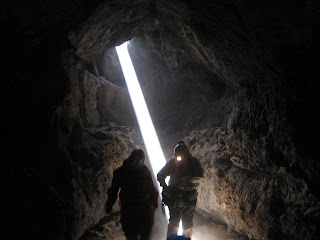
Today, well yesterday since it is very late now, I spent most of my work time in the Biology Lab. I dusted off some of my old lab skills and learned a few new tricks as well. We worked on some of the same soil samples that we collected on Monday while performing the transect. Today, our job was to prepare biological products for two different tests.
One process is called PCR which stands for polymerase chain reaction. Read about this process by clicking on this link.
Read about this process by clicking on this link.
www.accessexcellence.org/AB/GG/polymerase.html.
1. From the above web site, why do you think lab facilities perform PCR? What is the point?
Another process was called Electrophoresis. Read about electrophoresis at:
http://en.wikipedia.org/wiki/Gel_electrophoresis
2. Describe electrophoresis.
3. Why would it be used?
4. Do you think PCR or electrophoresis is the better test for our soil samples? WHY?
Have a great Spring Break for those of you who go on break soon.
One process is called PCR which stands for polymerase chain reaction.
 Read about this process by clicking on this link.
Read about this process by clicking on this link.www.accessexcellence.org/AB/GG/polymerase.html.
1. From the above web site, why do you think lab facilities perform PCR? What is the point?
Another process was called Electrophoresis. Read about electrophoresis at:
http://en.wikipedia.org/wiki/Gel_electrophoresis
2. Describe electrophoresis.
3. Why would it be used?
4. Do you think PCR or electrophoresis is the better test for our soil samples? WHY?
Have a great Spring Break for those of you who go on break soon.









